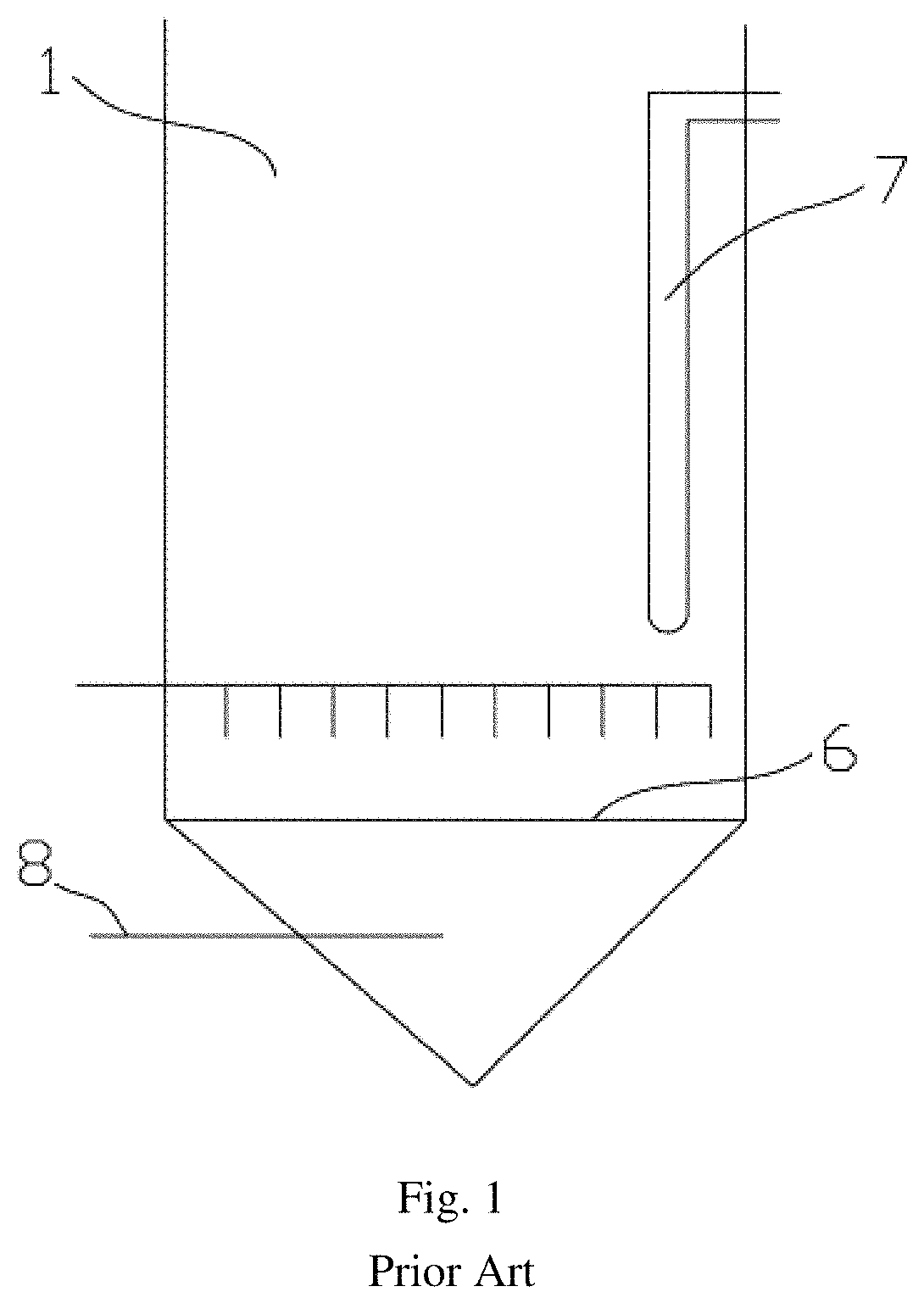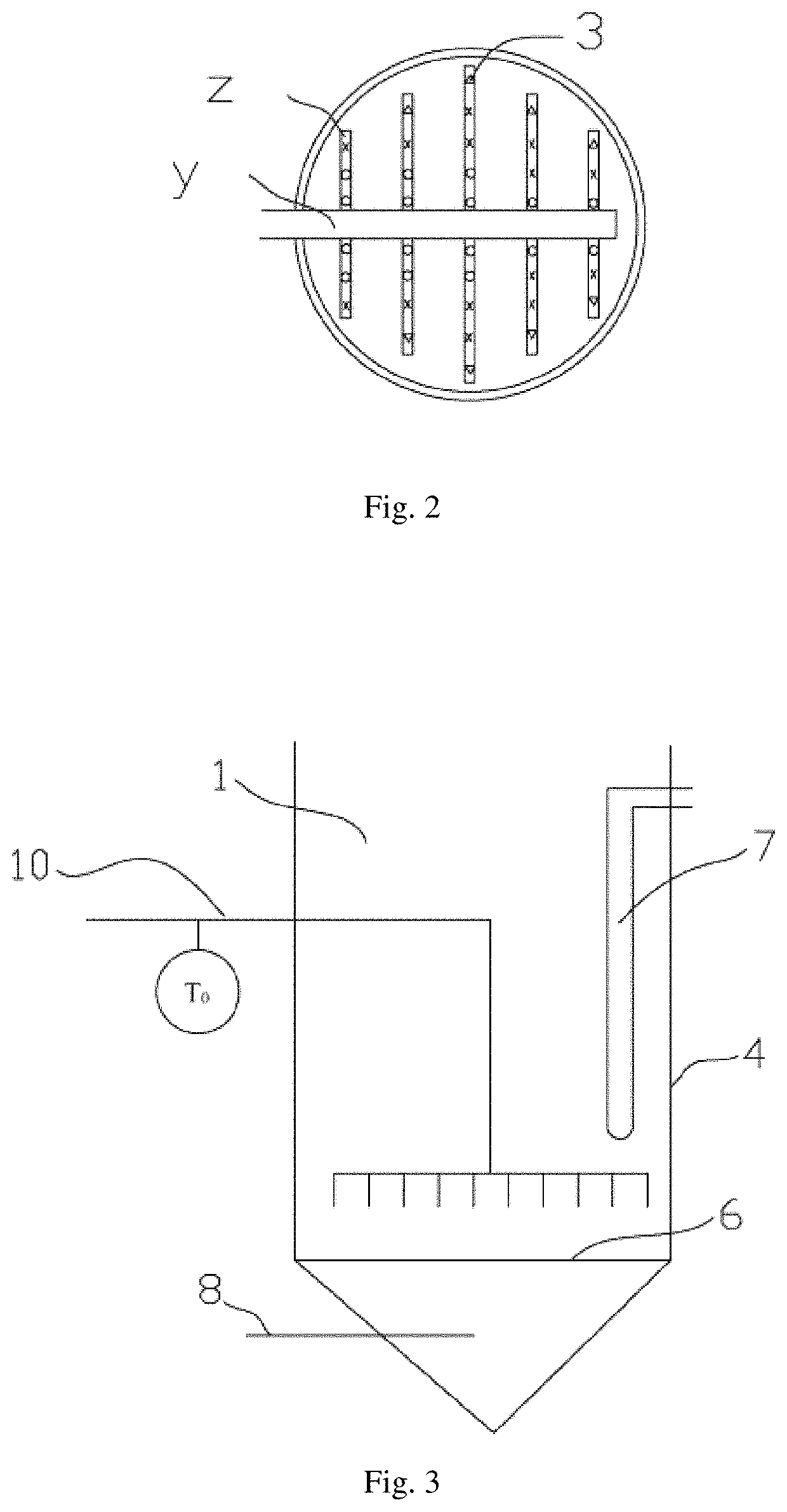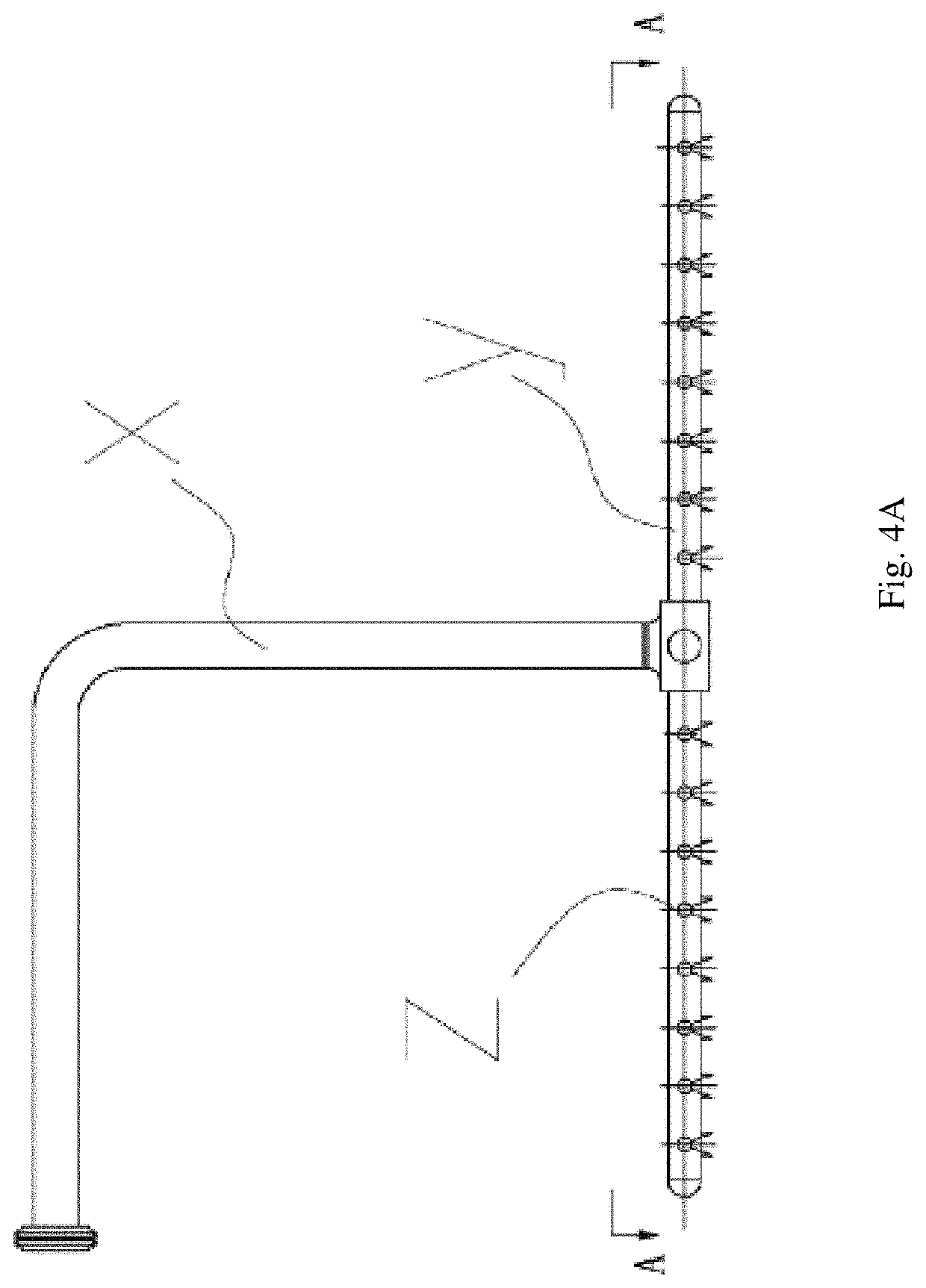Feed gas feeding system for propylene ammoxidation reactor
a technology of propylene ammoxidation and feed gas, which is applied in the direction of organic chemistry, chemical/physical/physical-chemical processes, and bulk chemical production, etc., can solve the problems of reduced reaction performance, increased distributor replacement frequency of apparatus, and forced to stop working, so as to reduce the risk of brittle nitriding fractures
- Summary
- Abstract
- Description
- Claims
- Application Information
AI Technical Summary
Benefits of technology
Problems solved by technology
Method used
Image
Examples
example 1
[0127]A fluidized bed reactor had a diameter of 5.0 m, and an apparatus was operated at full load. A feed gas ratio C3H6:NH3: air was 1:1.2:9.3, a reaction temperature was 440° C., and a reaction pressure was 55 KPa. A propylene and ammonia distributor had the form as shown in FIG. 7, was made of carbon steel, and had z-pipes of a diameter of φ80 mm. A propylene and ammonia mixed gas reached tail end nozzles of respective z-pipes through the propylene and ammonia distributor, wherein the propylene and ammonia mixed gas reached the furthest tail end nozzle when it traveled a traveling length of 2.42 m in a corresponding z-pipe. According to relevant model data and available experimental data, the temperature of the propylene and ammonia mixed gas at an inlet of the distributer was controlled to 220° C., the average rate of temperature rise per unit length when the propylene and ammonia mixed gas traveled in a z-pipe was 52° C. / m, and the temperature of the propylene and ammonia mixed...
example 2
[0128]A fluidized bed reactor had a diameter of 5.4 m, and an apparatus was operated at full load. A feed gas ratio C3H6:NH3: air was 1:1.2:9.3, a reaction temperature was 440° C., and a reaction pressure was 55 KPa. A propylene and ammonia distributor had the form as shown in FIG. 7, was made of carbon steel, and had z-pipes of a diameter of φ90 mm. A propylene and ammonia mixed gas reached tail end nozzles of respective z-pipes through the propylene and ammonia distributor, wherein the propylene and ammonia mixed gas reached the furthest tail end nozzle when it traveled a traveling length of 2.6 m in a corresponding z-pipe. According to relevant model data and available experimental data, the temperature of the propylene and ammonia mixed gas at an inlet of the distributer was controlled to 160° C., the average rate of temperature rise per unit length when the propylene and ammonia mixed gas traveled in a z-pipe was 60° C. / m, and the temperature of the propylene and ammonia mixed ...
example 3
[0129]A fluidized bed reactor had a diameter of 7.5 m, and an apparatus was operated at full load. A feed gas ratio, a reaction temperature, and a reaction pressure were the same as those in Example 1. A propylene and ammonia distributor had the form as shown in FIG. 7, was made of carbon steel, and had z-pipes of a diameter of φ90 mm. A propylene and ammonia mixed gas reached tail end nozzles of respective z-pipes through the propylene and ammonia distributor, wherein the propylene and ammonia mixed gas reached the furthest tail end nozzle when it traveled a traveling length of 3.65 m in a corresponding z-pipe. According to relevant model data and available experimental data, the temperature of the propylene and ammonia mixed gas at an inlet of the distributer was controlled to 200° C., the average rate of temperature rise per unit length when the propylene and ammonia mixed gas traveled in a z-pipe was 40° C. / m, and the temperature of the propylene and ammonia mixed gas at said fu...
PUM
| Property | Measurement | Unit |
|---|---|---|
| temperature T0 | aaaaa | aaaaa |
| diameter | aaaaa | aaaaa |
| diameter | aaaaa | aaaaa |
Abstract
Description
Claims
Application Information
 Login to View More
Login to View More - R&D
- Intellectual Property
- Life Sciences
- Materials
- Tech Scout
- Unparalleled Data Quality
- Higher Quality Content
- 60% Fewer Hallucinations
Browse by: Latest US Patents, China's latest patents, Technical Efficacy Thesaurus, Application Domain, Technology Topic, Popular Technical Reports.
© 2025 PatSnap. All rights reserved.Legal|Privacy policy|Modern Slavery Act Transparency Statement|Sitemap|About US| Contact US: help@patsnap.com



